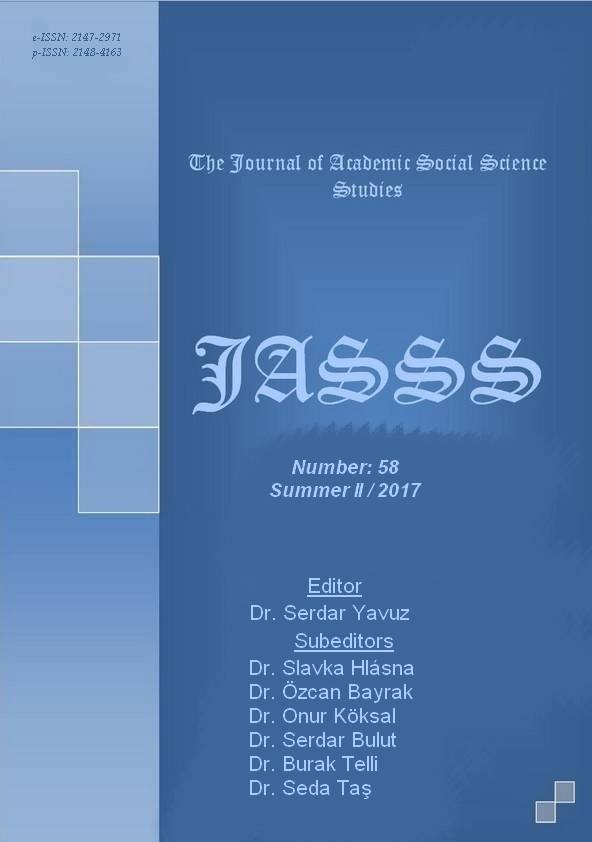Author :
Abstract
Çalışmada Mardin ve çevresinden elde edilen kıyamet anlatılarını içeren derleme metinleri öncelikle varoluşçu felsefe, kültürel kimlik ve eskatoloji mitleri bağlamında ele alınmıştır. Çalışmanın giriş kısmında varoluşçu felsefenin temaları ve kültürel kimlik üzerinde durulmuştur. Mardin’e ait eskatolojik anlatılar; farklı kültürel kimliklere sahip topluluklarda görülen ortak ifadeler, Müslüman, Hristiyan ve Yezidi kesime mensup kaynak kişilerin görüşleri doğrultusunda değerlendirilmiştir. Mardin ve çevresinden elde edilen eskatolojik metinler; kıyamet öncesi ve kıyamet sonrası olmak üzere iki başlıkta incelenmiştir. Çalışmada “Kıyamet Alametleri” olarak yer alan metinleri kıyamet günü yaklaştığında veya kıyamet anında ortaya çıkacak olaylar olarak değerlendirmek mümkündür. Konuyla ilgili elde edilen metinlerde geçen ifadelerin bazılarının kutsal kitaplara dayandığı bazılarının ise “Kızıltepe’nin kan gölüne döneceği, Mardin’in üzerine kurulan dağın adının ‘Massos’ olduğu ve kıyamet anında bu dağın yarılacağı, içinden Şahmeran ve altın çıkacağı”, “katırın doğuracağı”, “horozun yumurtlayacağı” gibi mitik anlatılar şeklinde ortaya çıktığı görülür. Kıyamet sonrasını konu alan metinler ise “cennet-cehennem” ve “yeniden dirilme” inancı bağlamında ele alınmış bu konuda ortaya çıkan metinler de yukarıdaki başlıklar altında incelenmiştir. Sonuç bölümünde mitik anlatılar varoluş felsefesinin temellerinden olan “ölüm” olgusunun “insanlığın/dünyanın ölümü” kıyametin yorumlanışında “yerel” ve “etnik” ifadelerin anlatıya dâhil olması şeklinde değerlendirilmiştir. Bunun yanı sıra kültürel kimlik bağlamında da söz konusu “yerel-mitik” anlatılar ele alınmıştır. Ve yine bu bölümde bütün alametler ve kıyamet sonrası yaşanacakların anlatıldığı metinlerin bir kültürden diğerine geçişgenlik gösterdiği üzerinde durularak kültür aktarımının yönü de tespit edilmeye çalışılmıştır.
Keywords
Abstract
The Associations in Eschatological Narratives Inhabiting in Mardin And Its Landscape in The Context of Existentialism With the studying of eschatology, the review texts including the narratives of apocalypse derived from Mardin and its landscape are primarily approached with existential philosophy, cultural identity and eschatology. In the entrance of study, the themes of existential philosophy and cultural identity are taken into the consideration. The eschatological narratives belonging to Mardin; the mutual significations witnessed in the societies possessing different cultural identities are evaluated in accordance with the wievs of personas from the communities of Muslim, Christian and Yazidi. The eschatological texts acquired from Mardin and its landscape are examined in two chapters. In the study, interpreting the texts as ‘the signs of apocalypse’ is highly probable as incidents which will show up on the edge of apocalypse or in the process of apocalypse…A number of statements, taking part in the texts including the theme of apocalypse derive its sources from holy scriptures. The other statements show up as mythical narrations pointing out that “Kızıltepe, a province of Mardin will turn into a hell with brutal numerous deahts”, “the mountain located in Mardin is named as ‘Massos’ will split in two than ‘Shahraman, the queen of Serpents and a sum of golden will come out of the mountain.”, “The mule will give a birth.” And “The rooster will lay eggs.” The texts giving a place to post-apocalypse are tackled in association with the belief in ‘Heaven and Hell’ and such texts are observed under the title of such particular themes above. In conclusion part, in mythical narrations, the phenomenon “death” as one of the essence of existential philosophy and ‘domestic and ethnic’ statements are must to be included within the narratives while interpreting the apocalypse, in other words, “the death of humanity and the earth.” are evaluated. In addition, “narative-mythic” narrations are deal within the context of cultural identity. In this chapter, with regard to the texts narrating the complete signs and the experiences of post-apocalypse and their transference to one culture to another, also the direction of cultural transference are tried to be found out.





